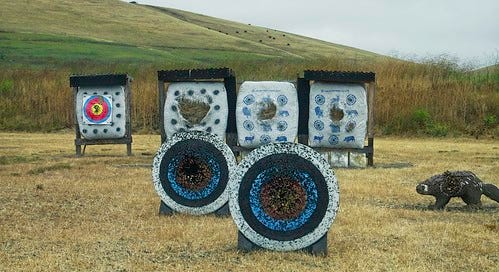This article continues our project explaining each line of Sun Tzu’s work. The English and Chinese are from my award-winning translation, The Art of War and The Ancient Chinese Revealed. Start here for the book’s opening lines.
The lessons of the fifth Section of Chapter 6 of The Art of War are about how we identify the basis that we want others to use for comparing us. This chapter is about “weakness” and “strength,” which Sun Tzu describes as “emptiness” and “fullness.” The lessons of this section focus on the fullness and emptiness of knowledge about our aims.
All competition is a comparison between alternatives. Comparisons must be made when people want to reward one alternative over another. We want people to compare us so we can win rewards. We want to strengthen the favorable opinions of those who support us, confuse those who oppose us, and get the attention of those who ignore us. Good strategy controls information to enable these things to happen.
We must find ways for others to compare us favorably. The skill of finding strong comparisons is called “aim.” It is one of the four skills we use to advance our positions in the minds of others: listening, aiming, moving, and claiming. We listen to gather needed information. Putting that information together to find a target, one that pits our strengths against the weaknesses of others is called aim. We then use the skill of moving to execute on this aim.
Strength
We must take the initiative in identifying the best basis for our comparison to others. This chapter starts the discussion of weaknesses and strength with our having no position in a new competitive area and, therefore, no strengths. Each section of the chapter explains the next step in using weakness and strength to build our positions. At this point in the process we have established a position, but we are seeking to advance it by standing out in a positive way. To do this, we do not try to attack or tear down the positions of others. We seek to highlight our strongest characteristics.
(In the quotations below, we summarize each Chinese character as a single English word shown in < > brackets. A sentence from my English translation follows.)
<Our> <place> <give> <battle> <’s> <ground> <no> <can> <know>
You must keep the place that you have chosen as a battleground a secret.
We must control competitive information about our positions. Every position consists of many dimensions, starting with the five dimensions that are the basis of all strengths and weaknesses:
Mission,
Climate,
Ground,
Command, and
Skills.
Each of these dimensions can be broken down into many more characteristics. Any of these characteristics can be used as a basis of comparison. For example, leaders can be compared on the basis of their intelligence or their courage. We must decide which of these dozens of characteristics are the most important in improving our positions in the minds of others in a given situation.
What do those who are making decisions about us need? If they have an unmet need, it means that those to whom we are being compared are not addressing that particular area. This is the opening that will be our basis of comparison, but we must keep this “battleground” a secret to maintain our element of surprise. We must reveal this information only at the right time, when it is too late for our rivals to adapt.
Weakness
To highlight our strengths, we must contrast them with the weaknesses of our opposition. In many competitive situations, we can choose which opponents to engage in “battle,” that is, those to whom we will be compared. When we make that choice, we must target them without their expecting it.
The rest of this article is reserved for our paid subscribers. Become a free subscriber for weekly previews and one monthly free article. To get all weekly articles become a paid subscriber.
Keep reading with a 7-day free trial
Subscribe to Practical Strategy Based on Sun Tzu's Art of War to keep reading this post and get 7 days of free access to the full post archives.





